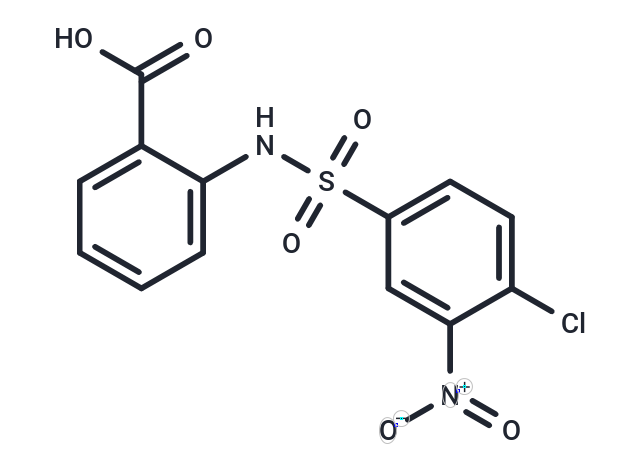Shopping Cart
- Remove All
 Your shopping cart is currently empty
Your shopping cart is currently empty

CTPI-2 is an inhibitor of mitochondrial citrate carrier SLC25A1 with(KD : 3.5 μM). CTPI-2 inhibits glycolysis, PPARγ, and its downstream target the glucose transporter GLUT4. CTPI-2 exhibits anti-tumor activity.CTPI-2 halts salient alterations of NASH reverting steatosis, preventing the evolution to steatohepatitis, reducing inflammatory macrophage infiltration in the liver and adipose tissue, and starkly mitigating obesity induced by a high-fat diet.

| Pack Size | Price | Availability | Quantity |
|---|---|---|---|
| 50 mg | $47 | In Stock | |
| 100 mg | $66 | In Stock | |
| 200 mg | $89 | In Stock | |
| 1 mL x 10 mM (in DMSO) | $45 | In Stock |
| Description | CTPI-2 is an inhibitor of mitochondrial citrate carrier SLC25A1 with(KD : 3.5 μM). CTPI-2 inhibits glycolysis, PPARγ, and its downstream target the glucose transporter GLUT4. CTPI-2 exhibits anti-tumor activity.CTPI-2 halts salient alterations of NASH reverting steatosis, preventing the evolution to steatohepatitis, reducing inflammatory macrophage infiltration in the liver and adipose tissue, and starkly mitigating obesity induced by a high-fat diet. |
| Targets&IC50 | SLC25A1:3.5 μM (KD) |
| In vivo | CTPI-2, halts salient alterations of NASH reverting steatosis, preventing the evolution to steatohepatitis, reducing inflammatory macrophage infiltration in the liver and adipose tissue, while starkly mitigating obesity induced by a high-fat diet.?These effects are differentially recapitulated by a global ablation of one copy of the Slc25a1 gene or by a liver-targeted Slc25a1 knockout, which unravel dose-dependent and tissue-specific functions of this protein.?Mechanistically, through citrate-dependent activities, Slc25a1 inhibition rewires the lipogenic program, blunts signaling from peroxisome proliferator-activated receptor gamma, a key regulator of glucose and lipid metabolism, and inhibits the expression of gluconeogenic genes.?The combination of these activities leads not only to inhibition of lipid anabolic processes, but also to a normalization of hyperglycemia and glucose intolerance as well[1]. |
| Molecular Weight | 356.74 |
| Formula | C13H9ClN2O6S |
| Cas No. | 68003-38-3 |
| Smiles | OC(=O)c1ccccc1NS(=O)(=O)c1ccc(Cl)c(c1)[N+]([O-])=O |
| Relative Density. | 1.66g/cm3 |
| Storage | Powder: -20°C for 3 years | In solvent: -80°C for 1 year | Shipping with blue ice. | ||||||||||||||||||||||||||||||
| Solubility Information | DMSO: 30 mg/mL (84.1 mM) | ||||||||||||||||||||||||||||||
Solution Preparation Table | |||||||||||||||||||||||||||||||
DMSO
| |||||||||||||||||||||||||||||||

Copyright © 2015-2024 TargetMol Chemicals Inc. All Rights Reserved.